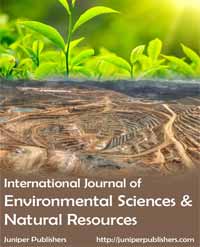Book Review 'Sustainability in Health Centres' (Spanish Version) - Juniper Publishers
Juniper Publishers- Open Access Journal of Environmental Sciences & Natural Resources
Book Review 'Sustainability in Health Centres' (Spanish Version)
Authored by Uqbah Iqbal
Mini Review
Written by Dr. Enric Auli Mellado, every new building must be sustainable, but it must also be healthy. The concepts of health, sustainability and building are clearly linked; to protect the environment, but also so that people can achieve our full physical, mental and psychic. When talking about healthy buildings, it's not just about avoiding "sick buildings", buildings that cause diseases (so abundant lately), but we have to achieve "healing buildings" that promote our health in the broadest sense of health term. This is especially true for those constructions destined for sanitary uses tables. Help build and manage buildings that protect the environment and health, and favor reiten the fullness of human development is the objective of this publication. An edition that is born of Ferrer's special sensitivity to environmental and health issues, and to the author decades of these issues. They talk and write a lot about sustainable construction; new buildings continually appear products elaborated with sustainability criteria.
From the Rio Summit in 1992 on environment and economic development, all the activities of the society have been oriented towards sustainability (including construction). Remember that understands sustainability as the integration of economic, social and environmental factors, giving everyone the same value. However, we are in a period of transition in which the sustainability is being associated almost exclusively with environmental protection, and the construction is not an exception.
Progressively, the aspects of integral health contemplated by sustainability will be expanded. In fact, the author believe that this integration will be one of the drivers of the necessary change in the model of society, an essential change that is already approaching. Many times the author have read and heard that buildings are responsible for 40% consumption of raw materials and 40% of energy consumption, which entails the emission of the 40% of CO2 emissions responsible for climate change. Therefore, it is desired that the new buildings consume little energy and scarce water, as well as that they do not waste valuable materials. Obviously these actions are positive and they are dedicated to the first chapter of this book. For the author it is just as important as and less known than many diseases, including 10% of lung cancers and a good part of circulatory disorders and allergies, have its origin in defective housing quality. It is essential that a good sustainable construction correct these defects and protect the health of its users. To the interior quality of the buildings, in their chemical, physical and biological aspects, are dedicated several chapters and special mention is made of nosocomial infections.
As we all professionals in the health sector know, health is not just absence of disease, but its ultimate goal is the full development of the person. A sustainable construction must reduce the consumption of energy, water and materials; it must avoid the defects that cause diseases; but it also has to enhance human fulfillment. We must build "healing buildings." For this, it is necessary to obtain in buildings interior harmony and at the same time a great connection, in a very broad sense, with the exterior. The natural lighting, the vision of the environment, the relationship between interior and exterior through green areas are the most usual means to achieve this connection. Its beneficial effects are evident in the improvement of disease cure times, the decrease in absenteeism and employee loyalty is another aspect that must be taken into account is the balance between the interior of the building and the natural energies that come from the outside: terrestrial magnetic field and cosmic radiations. Some hospital and enough buildings begin to be built having consider these parameters. These concepts and examples are focused on the publication. The lack of current specification of what is sustainable and what is not makes it necessary to establish objective criteria whose compliance must be certified by administrations or by private organizations. The book presents the most well-known building certification criteria and organizations today.
For more articles in Open Access Journal of Environmental Sciences & Natural Resources please click on: https://juniperpublishers.com/ijesnr/index.php




Comments
Post a Comment